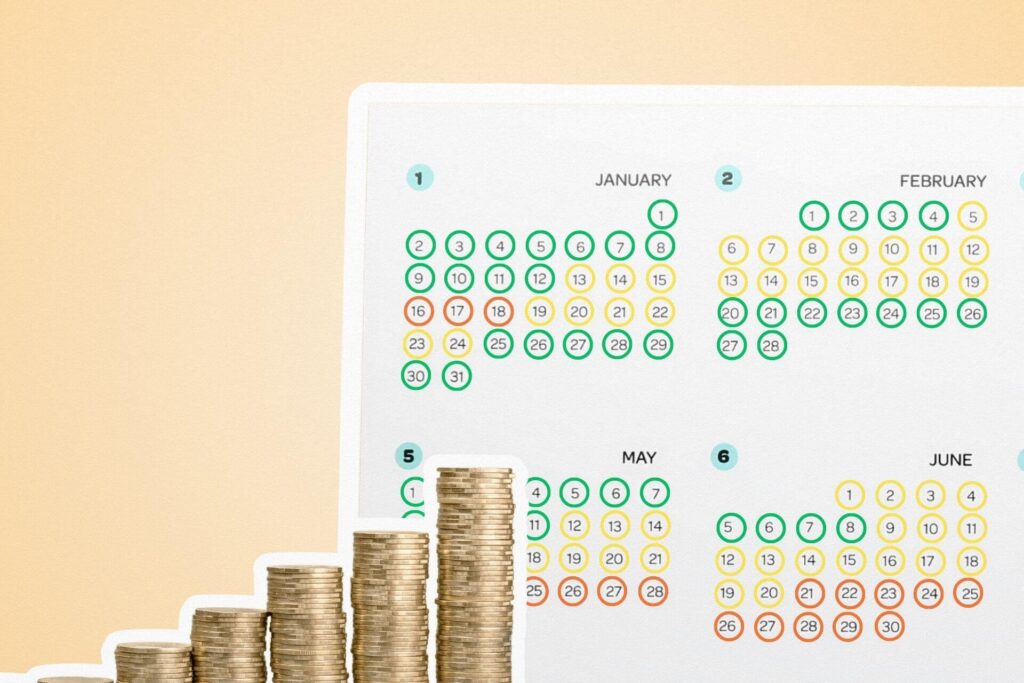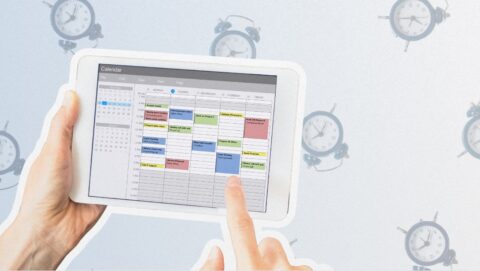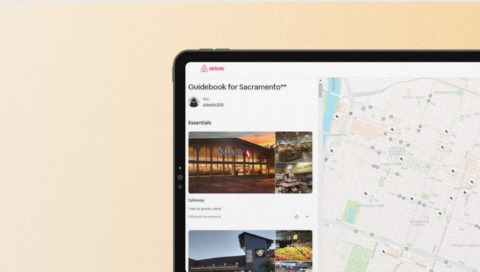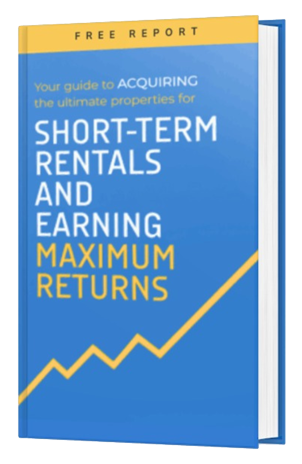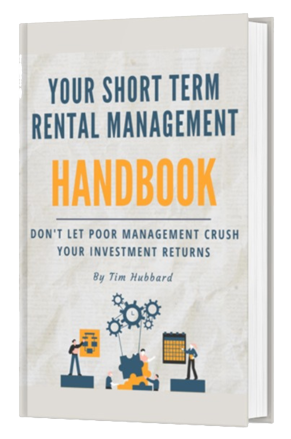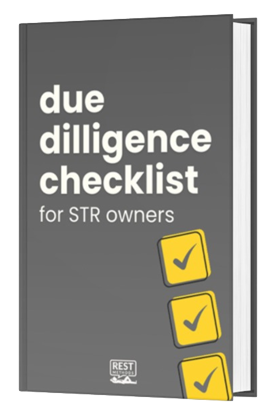In the bustling world of short-term rentals, there’s one secret weapon that successful hosts have in their arsenal: dynamic pricing.
Gone are the days of static, one-size-fits-all rates.
Welcome to the age of dynamic pricing for short-term rentals, a game-changing strategy that allows hosts to maximize their profits by adjusting prices based on various influencing factors.
According to Beyond Pricing, using dynamic pricing can help you earn 10% – 40% more.
Interested? Buckle up as we delve into the intricacies of dynamic pricing, its benefits, how to implement it, and more.
What is Dynamic Pricing for Short Term Rentals?
In essence, dynamic pricing for short term rentals refers to a pricing strategy where prices fluctuate based on market demand and supply.
It’s like the ebbing tides; the prices rise and fall, based on a variety of factors such as seasonality, local events, day of the week, length of stay, and advance booking periods.
The goal? To maximize revenue and occupancy rates by striking a sweet balance between both.
Now, let’s dive a bit deeper. If you’re a vacation rental manager, you’re probably already adjusting your prices based on the season, weekends, and offering last-minute discounts.
But here’s the catch – demand is a fickle beast, changing its tune daily. If your pricing strategy isn’t dynamic enough to dance along, you might be leaving a substantial amount of money on the table.
This was demonstrated in a study conducted by Beyond Pricing in Hilton Head, South Carolina.
The study revealed that while demand fluctuated daily, the pricing of listings didn’t reflect these changes, especially during peak demand periods. When Beyond Pricing adjusted prices to reflect demand during Thanksgiving weekend and Fall Break, the results were significant.
During Thanksgiving, there was a 33% increase in revenue, amounting to an additional $104,000.
During Fall Break, by lowering prices during periods of low demand, an 18% increase in revenue was achieved, translating to an extra $90,000.
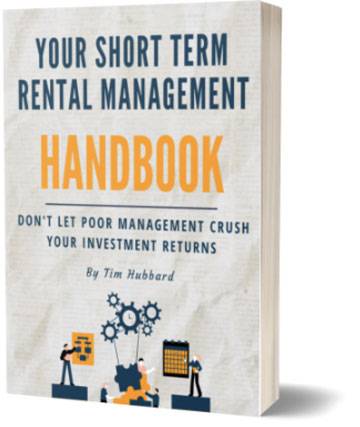
Don’t let poor management crush your returns.
Follow my 3-step mandatory reservation checklist to ensure your property is prepared to maximize returns.
Factors Influencing Dynamic Pricing
Dynamic pricing isn’t a magic wand you wave, and voila, you have your optimal price. It’s a subtle, delicate dance between various influential factors, each contributing to the final price.
Seasonality
Seasonality is a key player in dynamic pricing for short term rentals. Summer vacation or winter holidays, when demand for holiday rentals soars, can give you the flexibility to charge premium rates. Conversely, during off-peak periods when demand dips, lowering your prices might entice guests to book your property.
Local Events
Imagine there’s a high-profile conference, a popular festival, or a major sports event happening in your city. These events can attract a horde of visitors, creating a sudden surge in demand for short-term rentals. Sensing this increased demand, a dynamic pricing model would automatically increase your rental price.
Day of the Week
Weekend getaway or a mid-week break? The day of the week plays a crucial role in the dynamic pricing model. Generally, prices tend to spike over weekends and dip during weekdays, reflecting the typical patterns of traveler behavior.
Length of Stay
How long a guest chooses to stay can also influence dynamic pricing. Offering discounts for longer stays can encourage guests to extend their bookings, improving your occupancy rates and stabilizing your revenue stream.
The Concept of "Orphan Day"
Have you ever heard of the “orphan day” concept? It’s when a single day is left vacant between two bookings, making it hard to fill due to most travelers’ preference for multiple-night stays. Dynamic pricing models can automatically discount such days to make them more appealing to potential guests.
According to data from PriceLabs, “orphan days” are typically discounted by 10-20% to encourage bookings.
Advance Booking Periods
Finally, advance booking periods come into play. Last-minute bookings can allow for higher rates due to the urgency, whereas guests booking well in advance might expect discounted rates for their foresight.
You can set up a booking parameter that says, with this reservation request is more than 2 months or 3 months in advance, the minimum night stay has to be 3 days, a week, or 2 weeks, or whatever you decide it to be.
Tim Hubbard
Dynamic Pricing Tools: Importance & Benefits
Remember, dynamic pricing isn’t a set-and-forget strategy—it’s a continuous process of adjusting rates in response to market trends. And with an array of influencing factors at play, manually tracking and adjusting your prices can be a daunting task.
That’s where dynamic pricing tools step in.
These tools are algorithms designed to crunch vast amounts of data in real-time, analyzing the factors influencing your pricing strategy and adjusting your rates accordingly. And the benefits? They are manifold.
Not only do these tools save you considerable time and effort, but they also help optimize your pricing strategy, improve occupancy rates, and ultimately, maximize your revenue.
Plus, they remove human bias from the equation, ensuring that your pricing decisions are always data-driven and objective.
Our prices should be adjusting all of the time. They should not be static because the demand and the supply is always changing in the background.
Tim Hubbard
Examples of Dynamic Pricing Tool Uses
As a host, I’ve found PriceLabs to be an invaluable asset for managing my short-term rental pricing strategy. What I appreciate most about PriceLabs is its comprehensive data analysis. It takes into account a wide range of factors such as seasonality, local events, and market trends, enabling me to set competitive prices that maximize my revenue.
One of the standout features of PriceLabs is its customization options. I’ve been able to tailor my pricing strategy to my specific needs.
For instance, I can set a base price, minimum and maximum prices, and even adjust prices for weekends or ‘orphan days’.

Airbnb’s own Smart Pricing tool is another quintessential example of a dynamic pricing tool in action. With this tool, hosts set a minimum and maximum price for their listings, and the tool adjusts the price within that range based on factors such as location, seasonality, and guest demand.
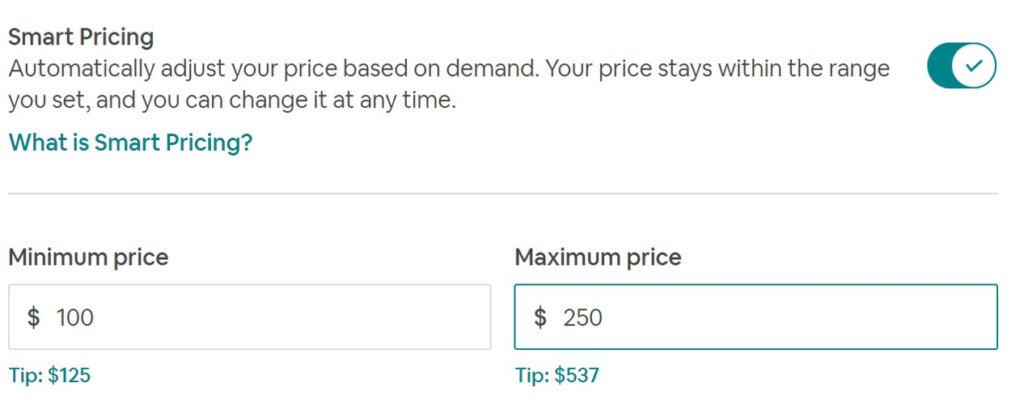
Another popular choice is Beyond Pricing. It syncs with your listing and adjusts prices daily based on an analysis of real-time market data.
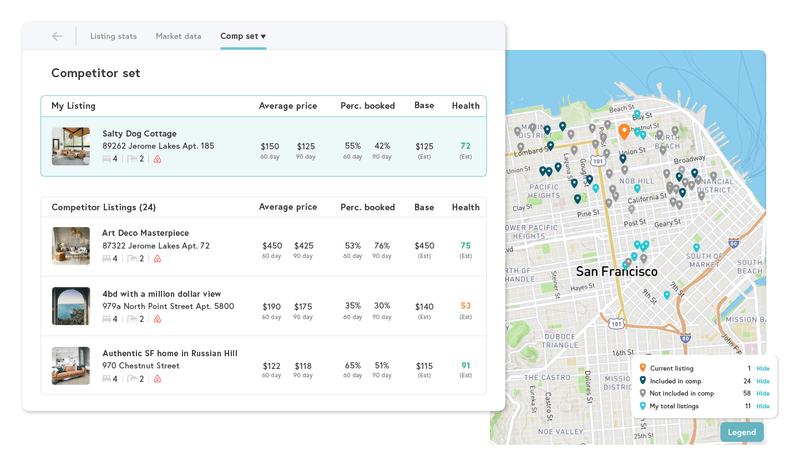
This includes factors like local events, holidays, and changing travel trends. These tools, therefore, ensure that you are always charging the optimal price and are not leaving money on the table.
Connecting Dynamic Pricing Tools
Most dynamic pricing tools are easy to connect to your short-term rental platform. Once you sign up with a pricing tool, you can link it to your listing platform, such as Airbnb or Booking.com, and it starts working its magic right away.
Remember, each tool has its unique set of features and benefits. The key lies in finding the one that aligns best with your business model and pricing goals.
Pitfalls of Incorrect Pricing
Let’s face it, setting the right price for your short-term rental isn’t as easy as pie. It’s a delicate balancing act. Tip the scales too far in one direction, and you might scare off potential guests with sky-high prices. Lean too much the other way, and you’re practically giving away your space for peanuts.
Either way, your profits are the ones that suffer.
But the repercussions of mispricing don’t stop there. It can also set off a chain reaction of vacancies. Think about it – a property that’s often vacant can slip down the ranks in search results, making it even less visible to potential guests. It’s like a snowball rolling downhill, gathering momentum and size as it goes.
But wait, there’s more.
Here’s a list of other potential pitfalls you might stumble into if your pricing isn’t on point:
Drawing in the Wrong Crowd
A bargain-basement price might seem like a good idea to attract more bookings, but it could also attract guests who don’t respect your property or its rules. The result? Potential property damage and a headache for you.
Diminishing Perceived Value
Consistently pricing your property lower than similar ones might lead guests to question its quality. It’s like seeing a designer handbag at a flea market price – it raises eyebrows.
Revenue Rollercoaster
If your pricing doesn’t take into account factors like seasonality or local events, you might find your revenue fluctuating more than a ride at an amusement park. This can make managing your finances feel like a game of whack-a-mole.
Losing Your Competitive Edge
Price your property too high, and you might find potential guests choosing more affordable options. It’s like showing up to a casual party in a tuxedo – you stand out, but not in a good way.
Stress Overload
Trying to find the “just right” price can feel like searching for a needle in a haystack. It’s stressful and time-consuming. This is where a dynamic pricing tool can come to your rescue.
Setting Up for a Fall
A high price can lead to high expectations. If guests feel the quality or amenities of your property don’t match up, they might leave negative reviews. It’s like going to a fancy restaurant and being served fast food.
Kissing Repeat Business Goodbye
If guests feel they didn’t get their money’s worth, they’re unlikely to book your property again. It’s like buying an overpriced coffee that tastes mediocre – you wouldn’t go back for a second cup.
Listen to this podcast episode here on
“How to Price Your Short-Term Rental Perfectly – EVERYDAY!”
The Benefits of Dynamic Pricing for Managing Multiple Listings
Managing multiple listings? Dynamic pricing is your knight in shining armor. When managing numerous properties, adjusting prices manually for each listing can be a Herculean task.
Dynamic pricing tools can automate this process, ensuring each of your properties is always priced optimally. This not only amplifies your revenue opportunities across all properties but also harmonizes the management process, making your life as a host considerably easier.
Setting Price Boundaries
A vital aspect of dynamic pricing is setting appropriate price boundaries. This includes both minimum and maximum price settings that play a crucial role in your revenue generation strategy.
There is such a thing as charging too much... if it gets too low, you may be attracting guests that you maybe don’t want at your property.
Tim Hubbard
Setting a minimum price helps you avoid attracting guests seeking bargain-basement deals. Often, these guests are more likely to misuse the property or violate house rules, creating more headaches for you in the long run. On the other hand, setting a maximum price cap ensures you don’t price yourself out of the market.
Using a ‘health score‘ is a helpful method to gauge the effectiveness of your pricing strategy.
A health score indicates how well your listings are doing compared to other properties in your area, considering factors like occupancy rate, average daily rate, and revenue per available rental day.
A low health score might suggest that your minimum or maximum price thresholds need adjusting.
Third-party Tools VS Airbnb's In-house Tool
Airbnb’s in-house tool, Smart Pricing, is a handy option that adjusts your listing price within your set boundaries based on demand and other factors. However, it may not provide the level of sophistication or customization that you might need to maximize your revenue, especially if you’re managing multiple listings.
In contrast, third-party dynamic pricing tools often offer more comprehensive data analysis and customization options. These tools consider a wider range of factors including market trends, special events, local holidays, competitor pricing, and more.
Plus, they can manage pricing for multiple listings across different platforms, not just Airbnb.
Choosing between the two largely depends on your specific needs. If you manage a single listing and prefer a hands-off approach, Airbnb’s Smart Pricing might suffice.
But if you’re handling multiple listings or want to drill deeper into data analysis and price setting, a third-party tool could be worth the investment.
If you’re using a third-party software tool like Price Labs, Wheelhouse, or Beyond Pricing, there’s no real conflict of interest there. I think they’re great tools. I would definitely check one out if you’re not using it. I almost guarantee you’re going to raise your revenue.
Tim Hubbard
| Third-Party Tools | Airbnb’s In-house Tool (Smart Pricing) | |
| Data Analysis | Comprehensive, using a wide range of data sources. | Uses Airbnb’s internal data and algorithms. |
| Customization | High level of customization options. | Limited customization options. |
| Integration | Can manage pricing across multiple platforms. | Only works for Airbnb listings. |
| Advanced Features | Offers features like revenue forecasting and performance reports. | Basic features focused on demand-based pricing. |
| Cost | Often comes with a cost, either per listing or as a percentage of booking revenue. | Free to use. |
| Ease of Use | Can be complex to set up and use. | Integrated into the Airbnb platform, easy to set up and use. |
| Potential for Errors | Potential for software glitches or errors. | Lower risk of errors as it’s directly integrated with Airbnb. |
| Pricing Accuracy | Can potentially achieve higher rates. | Some hosts report underpricing issues. |
How to implement dynamic pricing for short term rentals
Implementing dynamic pricing for your short-term rental involves several steps:
1. Understand Your Market
Before you can implement dynamic pricing, you need to understand the market in which your property is located. This includes understanding the demand and supply dynamics, peak and off-peak seasons, and any local events or factors that could influence demand.
2. CHOOSE A DYNAMIC PRICING TOOL
There are several dynamic pricing tools available, each with its own strengths and weaknesses. Some popular options include Airbnb's Smart Pricing, Beyond Pricing, and PriceLabs. Choose a tool that fits your needs and budget.
3. Set Your Parameters
Once you've chosen a tool, you'll need to set your pricing parameters. This typically includes setting a minimum and maximum price, as well as any rules for price adjustments based on factors like seasonality, length of stay, and booking lead time.
4. Connect Your Listings
Most dynamic pricing tools can integrate directly with your listings on platforms like Airbnb, VRBO, or HomeAway. Once connected, the tool will automatically adjust your prices based on your parameters and real-time market data.
5. Monitor and Adjust
Implementing dynamic pricing isn't a set-it-and-forget-it process. You'll need to monitor your bookings and revenue to ensure the pricing strategy is working as intended. If not, you may need to adjust your parameters or try a different tool.
6. Continual Learning and Optimization
The market dynamics can change over time, so it's important to continually learn and adjust your pricing strategy. This could involve tweaking your parameters, trying different pricing tools, or even taking a course or reading up on the latest best practices in dynamic pricing.
Final thoughts
Harnessing the power of dynamic pricing for short-term rentals is no longer an option but a necessity in the competitive landscape of today’s rental market.
Dynamic pricing enables you to maximize their revenue and stay ahead of the competition. It’s about working smarter, not harder, and dynamic pricing is the catalyst for making your hosting venture more profitable and efficient.
So why wait?
Step into the world of dynamic pricing today, and open the door to a world of possibilities for your short-term rental business.
Remember, in the world of rentals, the right price can make all the difference.
Frequently Asked Questions
Yes, Airbnb does offer a dynamic pricing feature known as “Smart Pricing”. This tool automatically adjusts your price based on changes in demand for listings like yours. It takes into account factors such as location, listing type, time of year, and market trends.
To set up dynamic pricing on Airbnb, follow these steps:
- Go to Your Listings on Airbnb and select a listing.
- Click Pricing at the top of the page.
- Under the Pricing settings section, click Edit next to Smart Pricing.
- Turn on Smart Pricing.
- Set your minimum and maximum price. Airbnb will never go below or above these limits.
- Click Save.
Airbnb’s dynamic pricing strategy, known as Smart Pricing, adjusts the price of your listing based on a variety of factors. These include the location of your property, the type and size of your listing, the time of year, local demand, and other market trends.
The goal of this strategy is to maximize your earnings and occupancy rate by setting competitive prices that reflect current market conditions.
To optimize your Airbnb price, consider the following steps:
- Use Airbnb’s Smart Pricing feature: This tool automatically adjusts your price based on changes in demand for listings like yours.
- Understand your market: Research similar listings in your area to understand the competitive landscape.
- Consider seasonality: Adjust your prices based on the time of year, local events, and holidays.
- Review your prices regularly: Market conditions can change quickly, so it’s important to review your prices regularly to ensure they remain competitive.
- Encourage reviews: Positive reviews can increase demand for your listing, allowing you to charge higher prices.
To set different prices for different months on Airbnb, follow these steps:
- Go to Your Listings on Airbnb and select a listing.
- Click Availability at the top of the page.
- Under the Trip details section, click Edit next to Seasonal discounts.
- Here, you can set custom prices for specific months. You can increase prices for high-demand months and decrease them for low-demand months.
- Click Save.

